What I have learned as a cancer patient is that the cancer isn’t isolated to me. It has tentacles that reach out to my closest support team: my family. What happens to me impacts them. The decisions I make impact them. How I act impacts them. It truly is a team effort.
While I intuitively understood this, I didn’t understand the extent to which it was true. It wasn’t until my parents, who drove all the way from Mississauga to help my husband and I during my treatments, sprung into action. Even though they looked after the all things related to meals, laundry and acted as my chauffeur and support-person when my husband was working, my husband was still running ragged taking care of the dogs and kids so that I could have the space to rest after my chemo treatments.
Prior to starting my treatment, we put a plan in place to tell my children. I spoke to my daughter’s teacher in advance and she lent us a book. So, during spring break, we read them “Maman a le cancer” (Mom has cancer), a book specifically aimed at young children. Click here for a list of books explaining cancer to children. Our youngest understood that I was sick, but that was the extent of it. However, our eldest really took it in and started implementing some of the suggestions given in the book to help mommy and daddy. It focused on the team dynamic and she picked it up. She asked if I’d dye my hair pink before it fell out, which I did. Since she seemed to want to be a part of what I was going through I decided to leverage that.
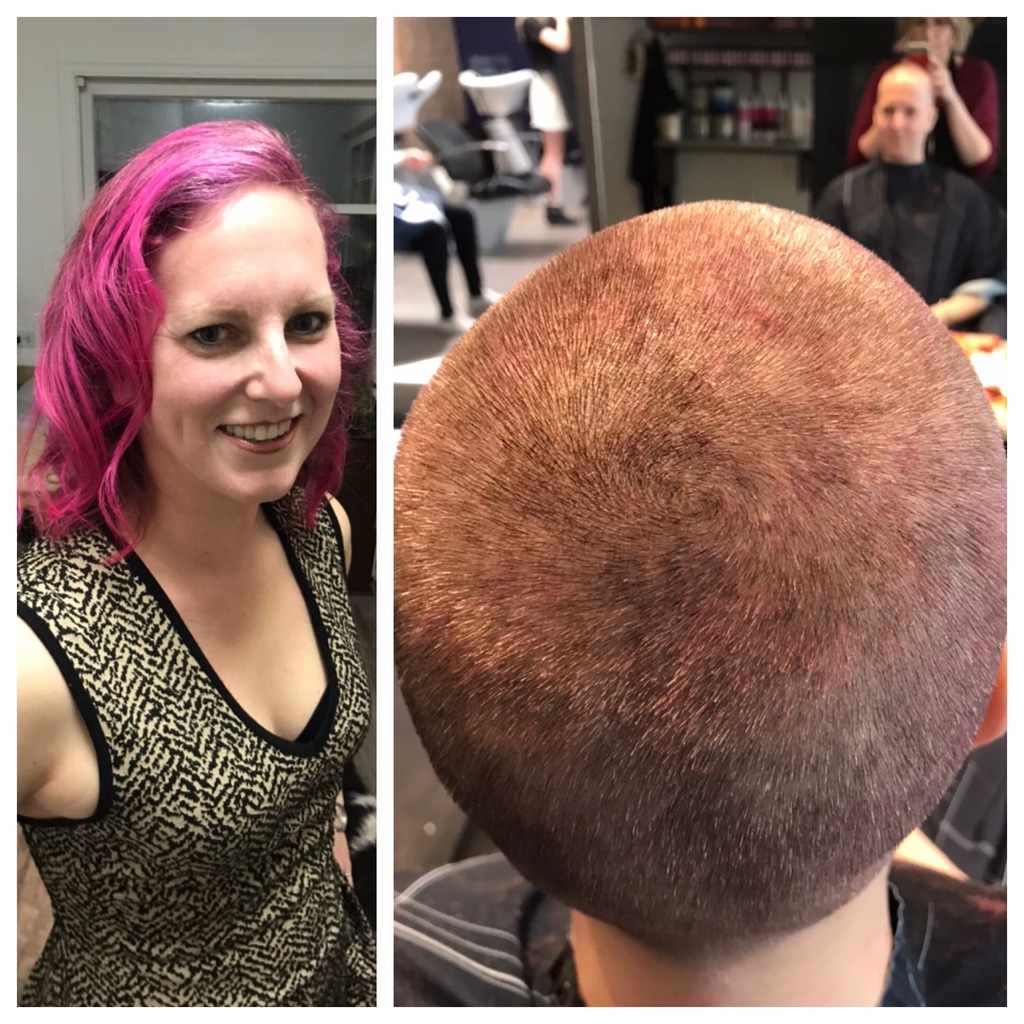
Before shaving my hair off, I picked up some chemo caps. I bought a few extra for the kids: matching daytime and nighttime ones for my daughter and I, and a cute, versatile one for my son. They seemed to like wearing them on occasion, be it to go out or just to sleep. They came to play read or play cards with me in bed when I was too tired to play with them after school or camp. However, about half way through my treatment, something changed with our daughter.
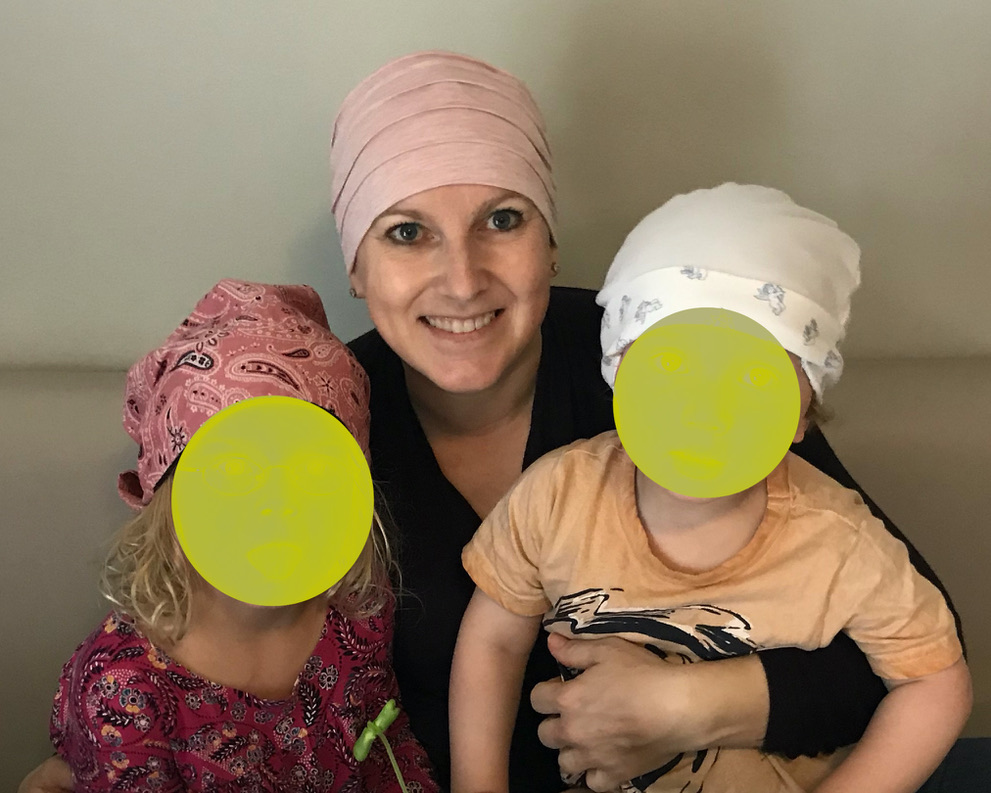
Even though we explained to the children (aged 2.5 and 5.25 at the time of my diagnosis) that mommy was sick, we didn’t know how my diagnosis and treatment would impact them. And, it wasn’t until several months into treatment that we started seeing behavioural changes in our daughter. Over the summer, she was placed with 6 and 7 year olds in her swim camps since she was too strong a swimmer for the 4 and 5 year old activities. I also had an allergic reaction to the chemo drug I was switched to in the second half of treatment and I became very spent much more time in bed as a result of the severe side effects I had. These two things happened around the same time. I’m not sure if either of these were triggers, however she started asking questions about what she and the family would do when I died. She began having nightmares where she was being killed by insects. She sometimes cries and can’t explain why. And, last week, she asked me if she will get cancer because of I have it.
What horrible thoughts for a five year-old to be worrying about. She should care about what she will draw with her chalk on the sidewalk, who can pick up the most rings from the bottom of the pool and who will find who in hide-and-go-seek. She shouldn’t be worried about her or I dying! So I started digging around to see if we could provide her with better support as clearly, what we were doing wasn’t enough.
Luckily, there are has some fantastic resources at our disposal, and each have a different role to play in ensuring that myself, my family and any additional caretaker has access to support and resources. Here are the ones that I have found useful for my family and I:
Alberta Cancer Foundation‘s (ACF) mission is “To create more moments for Albertans facing cancer by inspiring our community to give to innovation in detection, treatment and care.” They provide patients with nurse navigators, which I have extensively used. They provide financial assistance. Let’s face it… having cancer isn’t cheap! My post-chemo injections were $1,700 per injection! Thankfully I have coverage. ACF also funds research and other cancer-related non-profit organizations in Alberta.
Wellspring is a Canadian-based non-profit organization that provides a multitude of different programs to those living with cancer. Their programs cover the gamut, from exercise, art, mindfulness, educational seminars, etc. We will be taking advantage of the “Adventures in Art” with the kids. All four of us will go to the sessions starting in October (September was already full!) and I know the kids will love making stamps, a treasure box and a holiday banner. They also have a great cancer resource library, with books for all types and stages of cancer, for adults and kids alike.
In Alberta, cancer patients have access to Psychosocial Oncology, a department within Alberta Health Services (AHS), which connects patients (and extends to their families) with psychologists, social workers and counsellors with the goal of helping us navigate the stresses caused by cancer, the treatment and recovery. Best of all, it is a free resource and is accessible via self-referral.
I’m also very thankful that my company has an Employee Assistance Program (EAP) as part of my benefits. With it, my dependants and I have access to custom, solution-focused. short-term support, advice and information relating to a specific issue. This is an employer-specific benefit and unfortunately isn’t available to everyone. Check with your employer to see if this is included in your benefits package.
Every cancer, every patient and every one of their situations is different. However, there are a number of resources available to cancer patients. If you aren’t sure what is out there, ask your medical team or reach out to your local cancer society. They can help guide you.
Has this post been informative? If so, feel free to buy me a coffee or contribute towards some of my uninsured medical expenses.
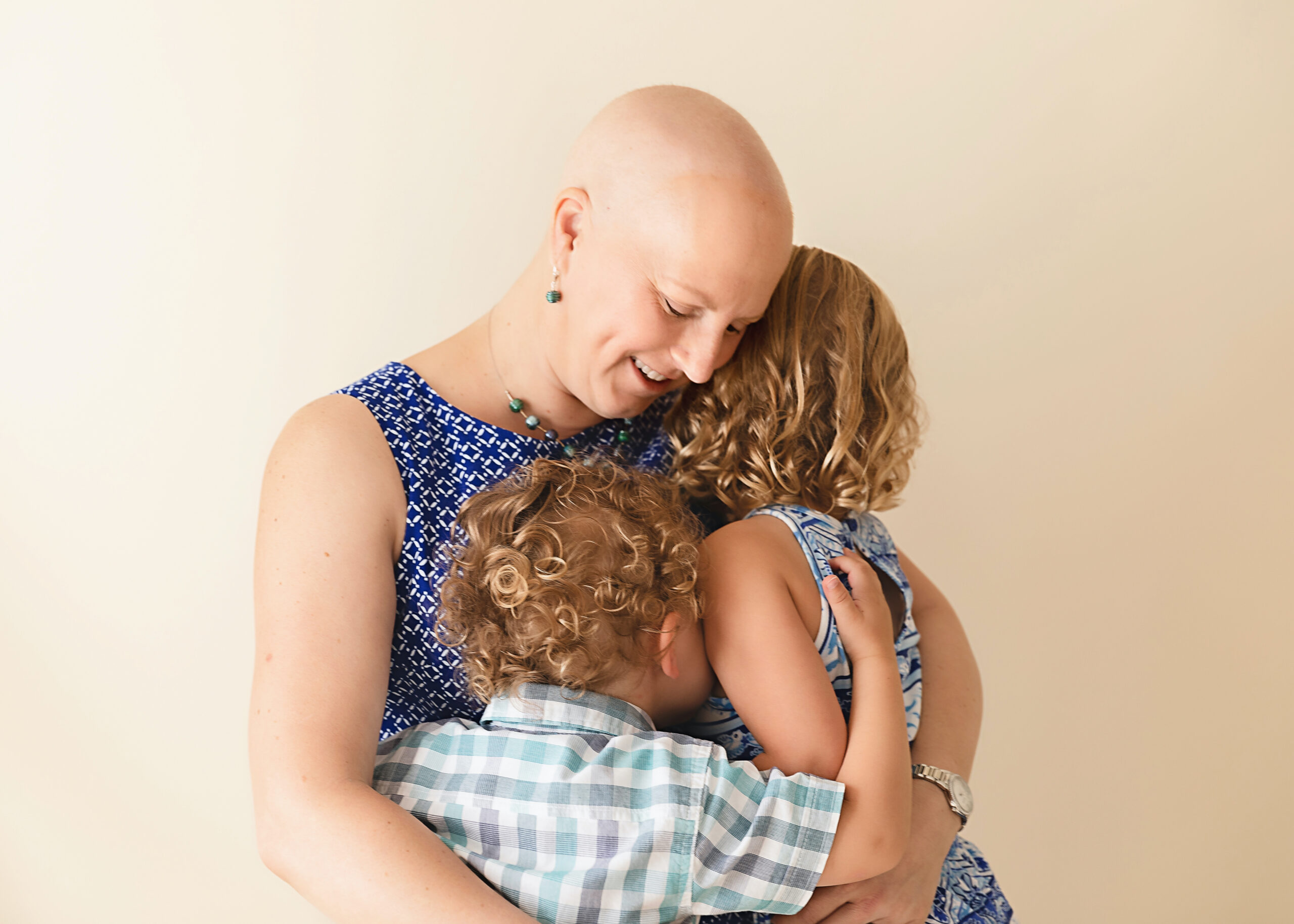
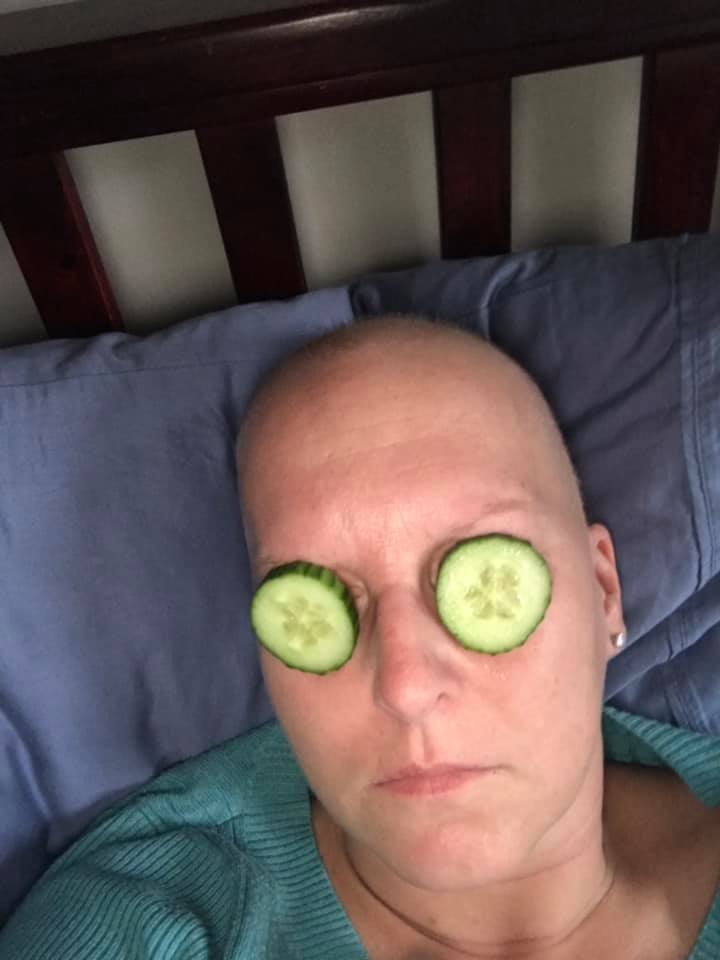
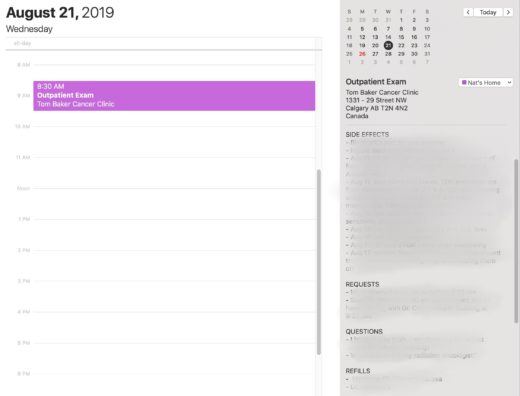
I’ve included this blog post to my favorites
I’m glad you are enjoying it!